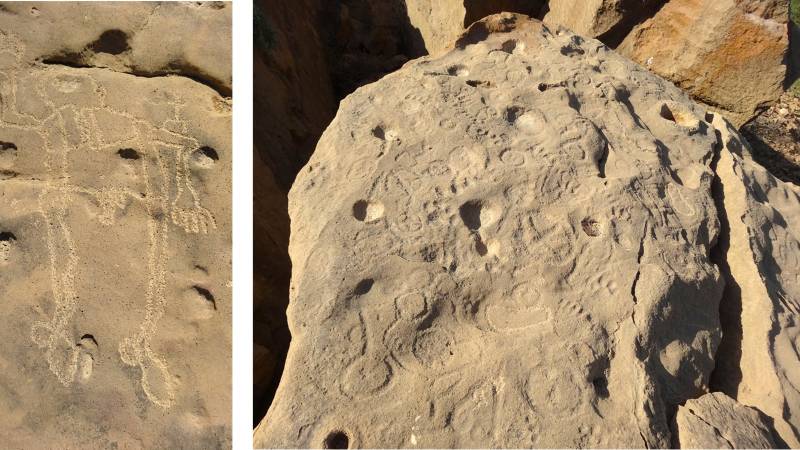
I have documented rock art in various valleys in the Karachi division. Notably, the Malir district hosts a significant number of rock art sites. One important area within the Malir district recognised for the presence of ancient carvings is the Thado Dam rock art site. This rock art site, which I have visited several times, is not just a collection of rocks but a window into the past. Thado Dam is about 10 km southeast of Gadap in Karachi. The area is noted for prehistoric and historic period petroglyphs. Ethnographic petroglyphs are also found at this site. The presence of ancient carvings reflects that the area was a significant settlement in the prehistoric period. Moreover, the presence of other rock art sites and stone tools found near Thado and other valleys in Gadap showed the importance of Thado Valley in the past. On the right bank of the Thado Dam is a series of rocks showing ancient and modern engravings.
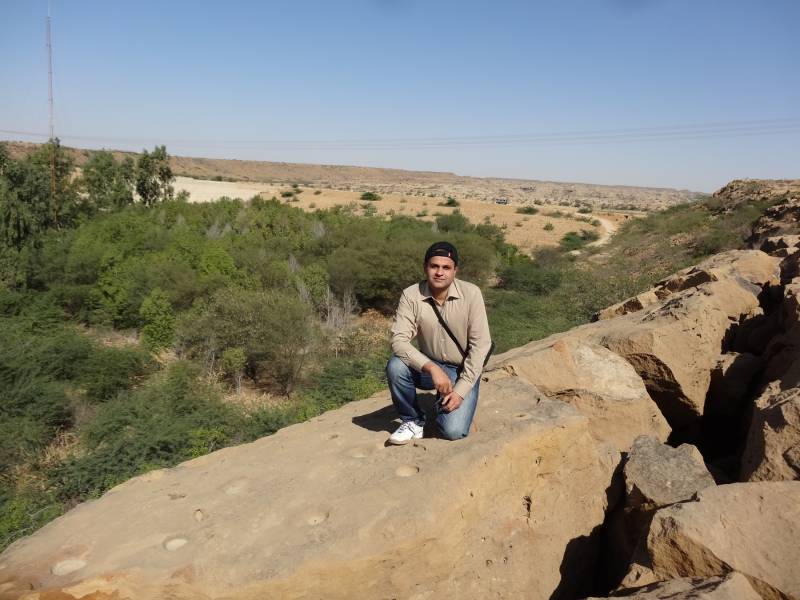
The most impressive engravings are those of footprints and handprints. These motifs are present in almost every major world rock art site and are also found in many rock art sites in Karachi. There are also a few engravings of handprints at the Thado Dam rock art site. Some are ancient, and others are recent strokes by the shepherds. One can also find engravings of handprints at Gidran Waro Gharoto and Lahut Buthi and Lahut Tar rock art sites in Gadap taluka.
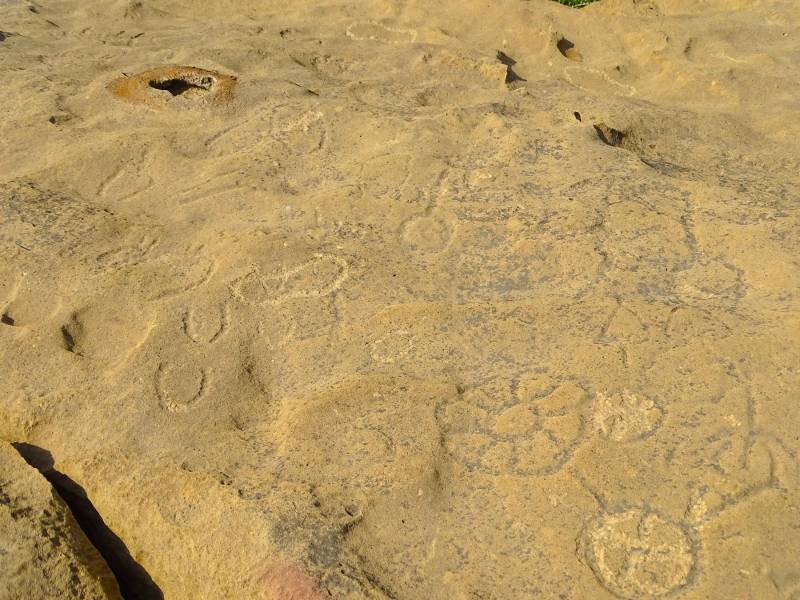
One can identify the right and left handprints in petroglyphs. I have discussed in detail these motifs in my book The Rock Art of Karachi, published in 2020, and I recently published book Ancient Karachi: Reflections on Rock Art and Megaliths, published in 2024 by DNA Baloch Institute of Heritage Research at Jamshoro, Sindh.
There are many cup-marks at this site: all are ancient, except one recently made by a shepherd
Aside from human handprints and footprints, the rock art site of Thado Dam also showcases ancient animal footprints or tracks. These depictions are not merely artistic expressions but also serve a didactic purpose, enlightening us about the ancient hunters' knowledge and skills. Animal tracks are rarely depicted in the rock art of the world. In Sindh, numerous depictions of animal tracks at rock art sites such as Lahut Tar, Lahut Buthi, Gidran Waro Gharto, and other sites in Gadap are found. The rock art in Gadap features tracks of felines, wolves, jackals, leopards, and other animals. These representations are unique to Sindh and are not found elsewhere in Pakistan. It is believed that ancient hunters in Karachi engraved these animal tracks to pass on knowledge to their younger generations, helping them to identify and hunt these animals. This practice likely helped young hunters gain knowledge and skills, eventually becoming celebrated hunters in later years.
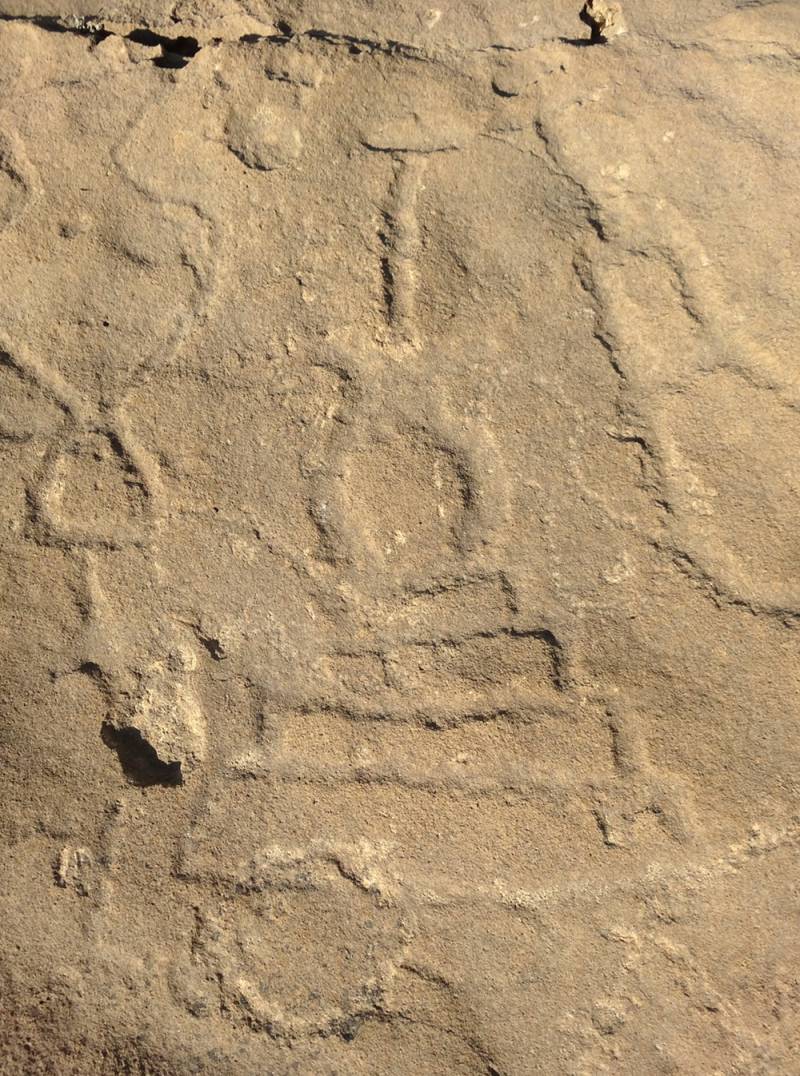
Despite the passage of time, rock art remains a living tradition in Sindh. Young and novice artists continue to engrave human footprints, handprints, and animal tracks in Gadap, a testament to the continuity and connection with the past that rock art provides. Shepherds continue to make ethnographic petroglyphs, a unique feature of Sindh's rock art, further reinforcing the living tradition of rock art in the region.
The Thado Dam rock art site has some fantastic depictions of anthropomorphic figures, including one wearing shoes that a shepherd recently engraved. Additionally, images of trucks and buses have also been engraved there. Depictions of game boards of Notin (also called Notini, Nautini, etc), a traditional Sindhi game, are also found. This game is played between two players and is still played in Gadap and other parts of Sindh.
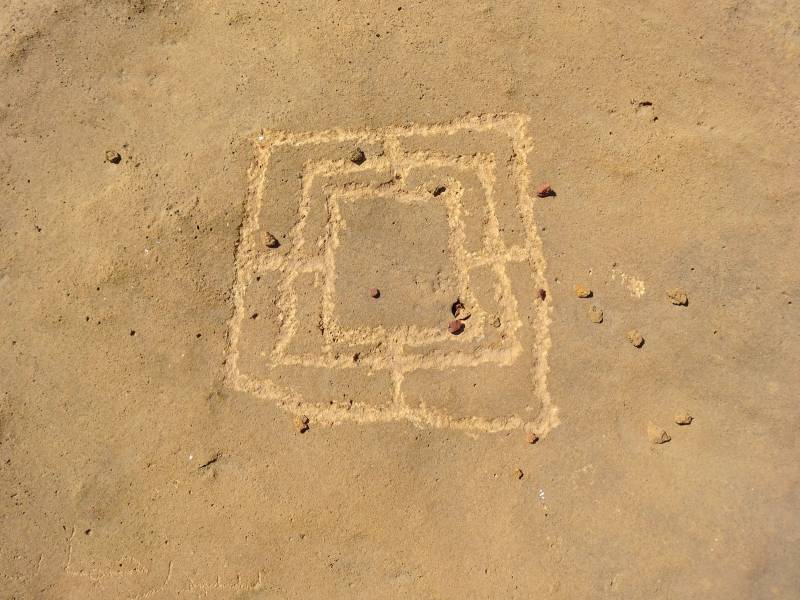
There are many cup-marks at this site. All the cup-marks are ancient, except one recently made by a shepherd. A few cup-marks are made with grooves, which probably represent the nearby landscape. Cup-marks are found in almost every rock art site in Sindh and have also been discovered in other parts of Pakistan.
Geometric motifs are found at Thado Dam and feature a variety of cross, rectangle, oval, and circle-shaped designs, mainly engraved with other petroglyphs. It is difficult to say anything about the significance of these designs, but they certainly had some meaning for the rock art producers. These geometric designs are very ancient. Some appear to be tribal brands or nishans/tamas
Floral motifs also appear in large numbers at this rock art site. One of the floral designs, which perhaps seems to be a lotus, is an ancient engraving associated with the Buddhist community that once inhabited the Thado Valley.
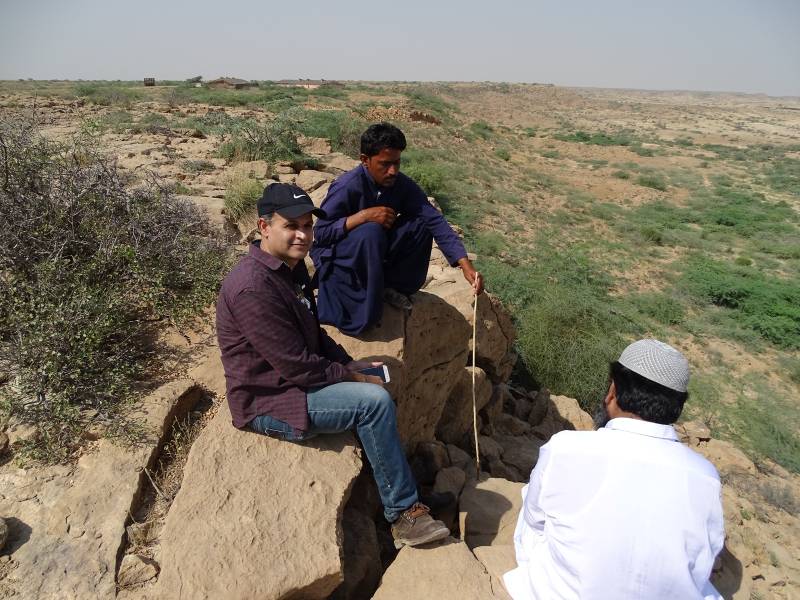
Stupa images are also found at the Thado Dam rock art site. Unfortunately, most stupa depictions at this site have suffered significant weathering, attributable to the site's exposure to the natural elements. As an open-air rock art site, Thado Dam has been subject to the effects of weather, which have visibly impacted not only the stupa depictions but also other motifs present at the location.
Eleven stupa images are to be found at the Thado Dam rock art site, most of which are badly weathered. Five stupa depictions are engraved on one of the panels at the Thado Dam rock art site. The first stupa, which is most magnificent, is a three-storey building resting on a rectangular platform. The anda (dome) of the stupa is surmounted with harmika and finial. Other smaller stupas flank this stupa. The first on the right is an oval-shaped stupa with a visible finial surmounting the upper storey of the stupa. This is a double-storey stupa with a finial at the top. On the left is a two-storey triangular-shaped stupa topped by harmika and finial. These stupa representations are fascinating and also tell a lot about the period in which these depictions were engraved at the Thado Dam rock art site. Below this group of three stupa depictions is another stupa, which is different from all three groups of stupas. This is a single-storey stupa without any topping. On the right of these three groups of stupa images is another stupa engraving which is very similar to the one which is a three-storey stupa with anda and a finial, which I call the magnificent stupa at this panel and which is also flanked by two smaller stupa engravings. Shepherds have vandalised this stupa. A closer look at this depiction shows the stupa's architecture, which appears to be a three-storey structure. The anda of the stupa rests on the drum.
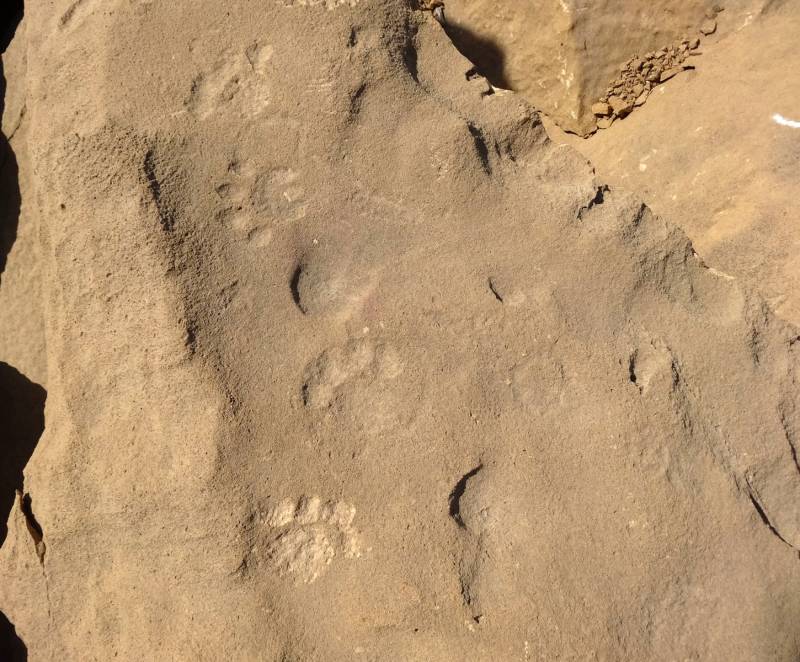
The dome of the stupa is surmounted with a finial. Apart from the five stupas on this panel, there is another rock panel with a tower-like stupa with a finial. It is a four-storey tower-like stupa. Close to this stupa depiction are four stupa drawings, which are now severely weathered and vandalised, and they are beyond recognition, but contours show that these were also tower-like stupas. Another panel south of three groups of stupa images contains the largest among all stupa representations at the Thado Dam rock art site. This is a two-storey stupa. The lower storey is square, and the upper is triangle-shaped with a hemispherical dome surmounted by a finial. This is also quite a unique stupa image. While looking at this stupa representation, I recall several such stupa representations which are also unique in terms of their style or architecture in many of the rock-art sites in Chilas, Thalpan and other rock art sites in Gilgit-Baltistan’s Diamer district.

